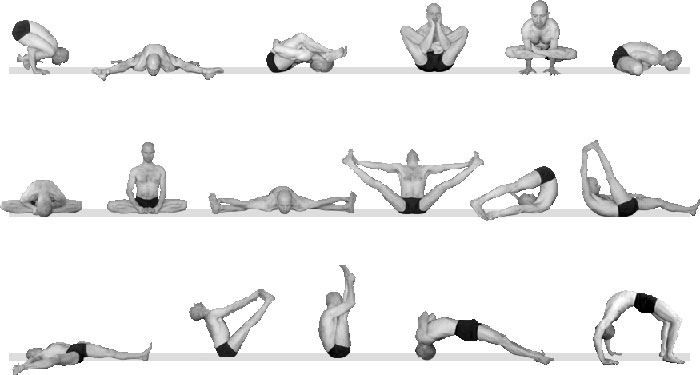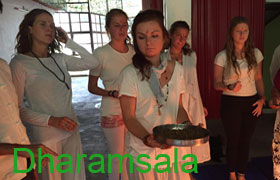Ashtanga Yoga
The philosophy of yoga was contributed by Maharshi Patanjali to address the main purpose of human life. It enables the mankind to eradicate the sorrow lying deep down in the conscience and attain the eternal bliss.
Human mind is the most powerful. Yet it can prove to be the most devastating too. It is capable of serving both constructive and destructive purposes. The constructive utilization of this power led to numerous amazing innovations which served the welfare of the mankind. The destructive usage of the same has showcased the calamitous influence on mankind too. Disturbance, violence or interruptions are of 9 types which revolve around the mind and body of the man like the nine planets revolving around the sun.
व्याधि स्त्यान संशय प्रमदालास्याविरतिभ्रान्तिदर्शन |
अलब्धम् – भूमिकत्व अनावस्थितत्वानी चित्तविक्षेपाः ते अन्तरायाः (यो0 द0 1/30)
Vyadhi (disease), sthyaan (lethargy), samshay (doubt), pramad (neglect), aalasya (laziness), avirati (incontinence), Bhrantidarshan (contradictory view), alabdh – bhumikatva (unobtained role) and anavasthitatv (instability) are the nine abberations of mind and can impede the practice of yoga.
Author: The following are the nine impediments of rear path of yoga practice. The author explains
Vyadhi (disease): Among the above mentioned list of impediments vyadi (disease) is the first. Disease may occur in any organ of the body and may affect the mind thereby. As a result the seeker diverges away from the contemplation of the divine. This is known as vyadhi. Doctors also advice patients not to worry because it is quite natural that human body is always prone to disease. But yogis do not agree with this concept. In their view human body is a medium to achieve Samadhi because this physical body is the only means to reach salvation. But unfortunately it does not last for very long time. It is affected by disease and may cause for fluctuations in mental health. This is called vyadhi.
Sthyaan (lethargy): The second impediment is called sthyaan i.e., lethargy. Not being successful in yoga practice even though one possesses the desire to achieve is called sthyaan. Every person has got his own aims and aspirations, but most often we do not seem to put in the necessary efforts to achieve them and become successful. This is called sthyaan. Thus sthyaan tends to manipulate the mind and refrain it from focusing on one’s objectives. Hence sthyaan also is considered to impede the spiritual growth of a person.
Samshay (doubt): The ambiguity concerned with the end result of yoga sadhana and dubious attitude about the self-ability is termed as samshay. The indecisive nature and inability to choose are the forms of samshay. This nature would lead a person to nowhere. The following phrase from Bhagavad Geeta quotes –
अज्ञश्चा स्रद्दधानश्चा संशयात्मा विनश्यति
नायं लोकोस्ति न परो न सुखं संशयात्मनः (4 – 40)
Meaning, any person who is ignorant; or who has no faith or interest; or whose mind is dubious would perish. Neither world nor moksha nor happiness exists for such person. Such a person cannot achieve moksha or eternal bliss forever. Thus one should get rid of uncertainty in order to move ahead in the path of yoga. Therefore samshay is also considered a huge hurdle in this path.





